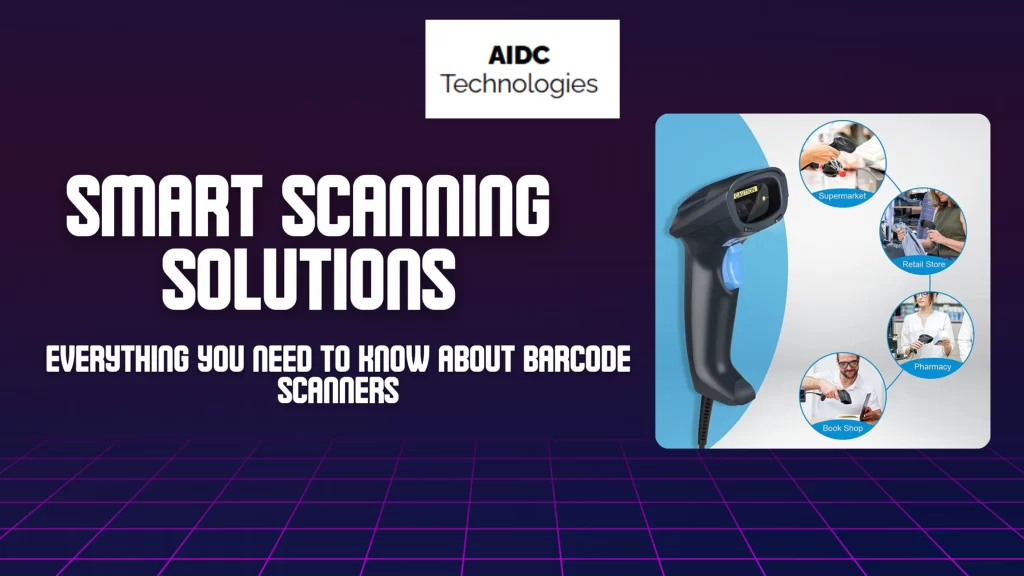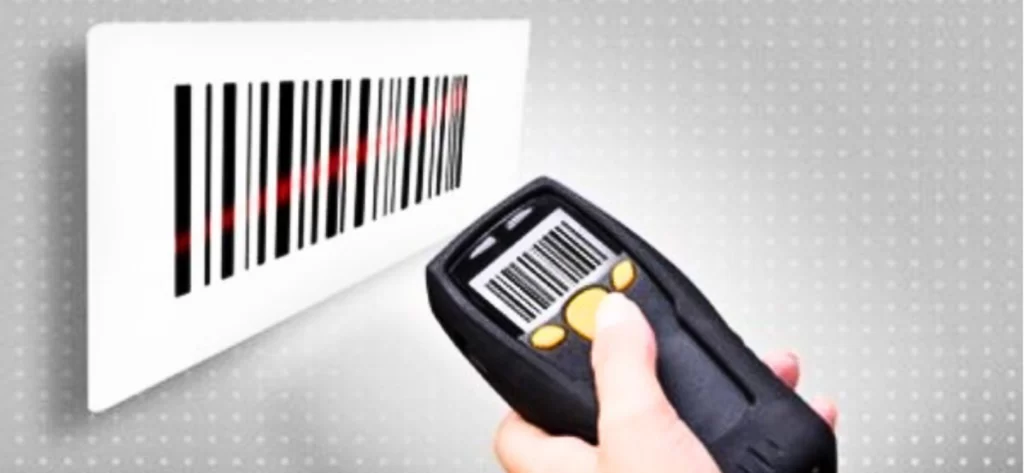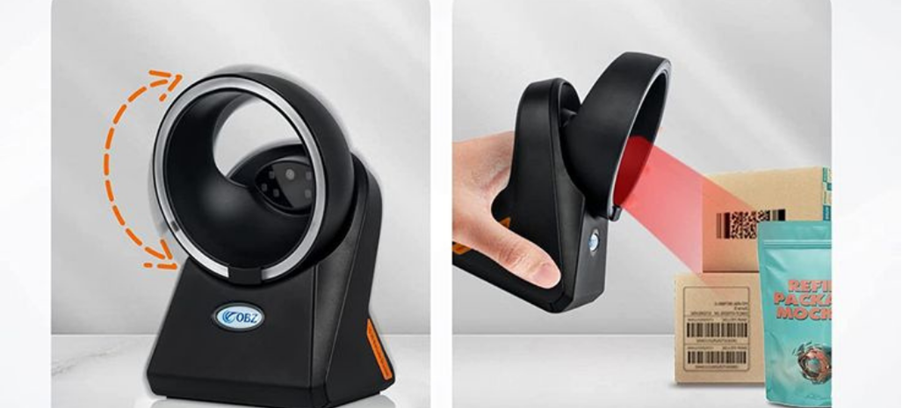
A barcode scanner definition is an important device that reads and decodes barcodes, which might be unique visual representations of information inside the form of lines and areas. These barcodes shop product records, making it simpler for agencies to manipulate inventory and income correctly. The barcode scanner captures the barcode photo, methods the facts, and transmits it to a laptop or point-of-sale (POS) device. This era appreciably reduces manual entry mistakes, speeds up transactions, and complements normal enterprise operations.
Table of Contents
ToggleHow Barcode Works and Functions
A barcode scanner definition operates by emitting a beam of light onto the barcode. The barcode scanner definition detects the versions within the contemplated mild to interpret the encoded facts. The decoded information is then sent to a linked device, which includes a pc or a POS gadget, in which it is processed and utilized.
The number one functions of a barcode scanner definition encompass short and accurate barcode studying, lowering human mistakes in information entry, improving operational performance, and facilitating stock control. With a barcode scanner definition, businesses can accelerate checkouts, tune stock stages in real time, and improve ordinary transaction accuracy.
Modern barcode scanners definition are available in diverse types, including handheld, desk-bound, and wireless models, catering to one-of-a-kind commercial enterprise needs. Some advanced scanners can read broken or damaged barcodes, ensuring uninterrupted operations. Many groups integrate barcode scanners with cloud-based systems for seamless statistics, admission, and synchronization. Additionally, industries beyond retail, along with healthcare and logistics, depend on barcode scanners for patient identity, cargo monitoring, and asset management.

Types of Barcodes
There are several types of barcodes, each specifically designed for different industries and applications. These barcodes play a crucial role in various sectors by enabling efficient tracking, identification, and data management. The most commonly used barcode types include:
- UPC (Universal Product Code) – This barcode is widely used in retail stores for product identification. It helps streamline checkout processes, maintain inventory records, and ensure accurate pricing.
- EAN (European Article Number) – Commonly utilized for international trade and product labeling, the EAN barcode system is essential for businesses involved in global commerce. It ensures product authenticity and facilitates smooth transactions across different regions.
- Code 39 – This barcode format is primarily used in the industrial and automotive sectors for asset tracking. It allows businesses to label and manage equipment, machinery, and tools efficiently, reducing the risk of misplacement or loss.
- QR Code (Quick Response Code) – A two-dimensional barcode capable of storing large amounts of data, QR codes are widely used in marketing, mobile transactions, and digital interactions. They can store URLs, contact information, and payment details, making them a versatile tool for businesses and consumers alike.
- Data Matrix – Frequently employed in the manufacturing and healthcare industries, the Data Matrix barcode is valued for its ability to store more complex information in a compact space. It is commonly used for labeling medical devices, pharmaceuticals, and small electronic components.
Each type of barcode serves a unique purpose, catering to specific business needs. Choosing the right barcode format is essential for optimizing operational efficiency, improving data accuracy, and enhancing overall workflow management.

Barcodes on Retail Products
Retail businesses rely on barcodes to streamline inventory management, pricing, and checkout processes. Products in supermarkets, clothing stores, and electronic outlets are tagged with barcodes that store essential details such as product names, prices, and stock levels. When a barcode scanner definition reads the barcode, it instantly retrieves this information and updates the system accordingly. This process ensures accurate pricing, faster billing, and improved stock control, leading to better customer experiences and efficient retail operations.
Issuing Barcode
To legally use barcodes on products, businesses need to acquire them from a certified organization such as GS1. The barcode issuance process involves several steps:
- Registering the company with a barcode standards organization (e.g., GS1).
- Receiving a unique company prefix, which serves as the foundation for generating barcodes.
- Creating individual barcodes for different products within the company’s inventory.
- Printing and applying the barcodes on product packaging to enable easy scanning.
Obtaining barcodes from a legitimate organization ensures standardization, compatibility, and ease of use across various retail and supply chain systems.
Pharmacy Barcode
In the pharmaceutical sector, barcodes play a critical role in ensuring drug protection, accuracy, and compliance. Medications are labeled with barcodes that include information about their composition, batch variety, and expiration date. Pharmacies and hospitals use barcode scanners to affirm prescriptions earlier than dishing out drug treatments, lowering the threat of human errors and making sure sufferers get hold of an appropriate medicinal drugs.
Additionally, pharmacy barcodes assist the motion of drugs, manipulate stock tiers, and save you from counterfeit drug treatments coming into the supply chain. By scanning barcodes, healthcare experts can quickly retrieve drug-related records and make certain compliance with industry policies.
Non-Retail Barcodes
While barcode scanner definition are usually related to retail organizations, they may be notably used in different industries as well. In logistics, barcodes help song shipments and make certain green deliver chain management. Warehouses use barcode scanners definition to manage inventory, locate products, and process orders with precision.
Manufacturing companies use barcodes to display uncooked materials, song manufacturing stages, and maintain first-rate control. In healthcare, barcodes are used for affected person identity, decreasing clinical errors and enhancing treatment accuracy. Government groups, instructional institutions, and even event organizers additionally utilize barcodes for asset monitoring, protection, and get admission to manipulate.

The Difference Between Barcode Scanner Definitions and a QR Code
A barcode scanner definition primarily reads traditional linear barcodes (1D barcodes), which contain limited information such as product numbers or pricing data. These barcodes are widely used in retail and inventory management.
On the other hand, a QR code is a two-dimensional (2D) barcode that can store a significant amount of data, including website URLs, contact details, and multimedia files. Unlike standard barcodes, QR codes can be scanned using smartphones, making them highly versatile for digital transactions, marketing campaigns, and mobile payments.
While barcode scanners are designed to read specific barcode types, QR codes require special 2D barcode scanners definition or mobile devices with camera-based scanning capabilities.

Different Types of Barcode Scanners or Barcode Readers
There are various types of barcode scanners definition, each designed for specific applications and environments:
- Laser Barcode Scanner – Uses laser technology for high-speed and precise scanning, ideal for retail and warehouse use.
- CCD Barcode Scanner – Employs light sensors to read barcodes commonly found in supermarkets and small businesses.
- 2D Barcode Scanner – Capable of reading both traditional barcodes and QR codes, making it useful in healthcare and logistics.
- Pen-Type Scanner – Requires manual movement across the barcode to decode the information; mainly used in low-volume scanning.
- Wireless Barcode Scanner – Provides mobility and flexibility in warehouse operations and large-scale inventory management.
Choosing the right barcode scanner definition depends on the business requirements, scanning volume, and barcode type used.
Conclusion
Understanding the barcode scanner definition and its functions is crucial for businesses seeking to improve efficiency and accuracy. barcode scanner definition streamline operations by reducing manual errors, enhancing inventory tracking, and facilitating smooth transactions. With various types of barcode scanner definitions available, businesses can select the most suitable model to meet their operational needs.
Whether in retail, pharmacy, manufacturing, or logistics, the barcode scanner definition plays a vital role in automating processes, improving accuracy, and ensuring seamless business operations. As technology advances, barcode scanner definition solutions will continue to evolve, providing businesses with more innovative ways to enhance productivity and data management.
For expert guidance on choosing the right barcode scanner Definition, Contact Us today!